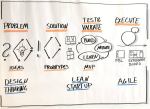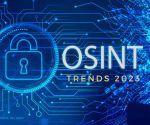“The threat of a recession coupled with the ongoing need for transformation and growth means CIOs must make force multiplying investments in 2023.”
CIOs and IT leaders should consider inflation’s impacts, a potential recession and continued supply chain risks when evaluating their 2023 Digital Transformation Strategies and priorities. These trends suggest that IT leaders should dial up programs that will drive cost savings, efficiencies and risk reduction in their 2023 transformation priorities.
On the other hand, slowing down work around customer experience, innovations and emerging technologies can lead to disruption. Even businesses in industries lagging in technology investments, like construction, manufacturing, healthcare, government and higher ed, should accelerate customer and growth-centric Digital Transformation initiatives.
Most importantly, recent layoffs in the Tech sector may create cultural challenges if employees fear for their jobs or doubt the financial stability of their employers. CIOs and IT leaders must find ways for employees to feel safe about their employment status and should consider increasing time and investments applied to employee learning and experimentation.
Businesses must continually monitor the most recent digital transformation trends in the market and strive to implement the technologies that will help them run more efficiently every day if they want to remain agile and achieve a competitive edge.
Old technologies are now continually transforming. Online connectivity speeds have increased from 2G to 5G, legacy software is becoming SaaS, and SaaS becoming XaaS and security systems have pivoted from passwords to face detection and motion sensors.
According to statista.com, businesses worldwide will spend 3.4 trillion dollars on their transition to becoming digital enterprises. As we look forward to 2023, here are the top trends that shall impact businesses worldwide.
1. Digital Sustainability
As the world faces a growing climate emergency, and with recent events like COP27 shining a light on the urgency for nations to take action, sustainability has become a major topic of discussion in recent years.
While the onus for addressing the crisis lies largely with those countries that are producing the highest levels of pollution, there is much that businesses can do on an individual level to play their part. This has seen organisations introducing a wide range of sustainable initiatives, such as modifying production processes to emit less waste or emissions, and implementing conservation techniques, such as using less energy and water on-premises.
One of the other key initiatives that businesses are employing is becoming more reliant on technology than other, less sustainable practices and processes. As such, in 2023, it is likely that more companies will seek to drive sustainability in their operations via implementing composable enterprise strategies – businesses breaking down the tech stack into smaller components and services called microservices or Packaged Business Capabilities (PBCs). By doing so, businesses will be able to unlock and integrate data and applications and apply automation and analytics to derive insights.
2. Automation For Efficiency
With no signs of slowing down, automation is on the roadmap of every business looking to free up employees’ valuable time and reduce errors. Automation adoption is often viewed as one of the best methods that companies can employ to streamline processes and boost revenues without causing costs to spiral out of control. With automation, organizations can seamlessly scale while reducing operational expenses along the way.
There are a few accessible and cost-effective ways to start introducing automation to your business:
- Robotic Process Automation(RPA). Use software robots to automate repetitive tasks like data entry, onboarding, or payroll processing.
- Intelligent Automation (Hyperautomation). The application of enhanced technology tools (such as computer vision, machine learning, natural language processing, and others) to a complex process to automate it from beginning to end, for purposes of reducing human effort and increasing efficiency.Gartner predicts that, by 2024, hyper automation will enable organisations to lower their operational costs by 30 per cent.
- Low-code or No-code Development. Empower teams with development tools that automate code writing through intuitive drag-and-drop and pull-down interfaces.
Whichever method you choose to explore, most automation efforts complement AI efforts with ease. Consider how these two digital transformation trends can work together to facilitate even smarter and more efficient automation for your business.
At a time of great economic uncertainty, when every penny that businesses spend needs to be clearly justified, automation is a proven and dependable cost saver.
3. Everything Artificial Intelligence (AI) And Machine Learning (ML)
For customers, efficiency and speed are no longer a bonus but an expectation in every type of imaginable environment and encounter. As AI and ML become more mainstream, the standard for excellence will continue to soar beyond the limits of a human team alone. But incorporating these technologies can amplify the power of your people.
An AI system shines when used to automate repetitive, manual tasks or retrieve relevant information at a moment’s notice — freeing up employees’ time so they can focus on driving business impact. And with the capacity to work around the clock, AI operates without the limits of working business hours or time zones.
Yet AI is only half the opportunity. Layering in ML is a way for AI and other programs to continuously improve and adapt performance, learning from any and all data it has access to. The more information it gains over time, the faster the ML system can uncover insights like who your best-performing customers are.
4. Build Trust With Cybersecurity
As more and more companies move their data onto the cloud, protecting that data becomes more crucial. And with hybrid work here to stay, it’s easier than ever for company data to become insecure through simple tactics like unauthorized sharing or phishing scams.
There’s no question data must always be secure, but customer data is an especially vulnerable area because the stakes are so high. When people’s personal addresses, credit card numbers, and emails are at stake, it only takes one data breach to lose customer trust forever. For companies with large amounts of data, a “zero trust model” like Microsoft’s can help you avoid reputational damage, revenue loss, or even lawsuits.
Even if your data security is robust, don’t miss out on an opportunity to build trust with your customers by being transparent about how their data is being used. Clearly share your privacy policy and only access their personal and financial data with explicit permission. Correctly handling customer data is a prerequisite to analyzing it for insight-driven business decisions.
5. From Cloud To Everything as a Service (XaaS)
Make way for the next-level cloud. This familiar technology is on track to emerge in new and surprising ways in the coming year. While connecting data through a digital hub is commonplace today, more and more organizations are now fully moving to the cloud to access information anywhere and at any time. Embracing technology makes collaboration second nature on an enterprise scale while making the costs of physical hardware a thing of the past. And with widespread user adoption, cloud-native applications are meeting the increased demand with improved scalability and results for organizations.
Mirroring this development, many companies are also starting to shift toward everything as a service (XaaS) — meaning all their products and services are available as cloud-based subscription services. Instead of a fragmented offering, everything from storage to security to communications is digital.
6. Automated Data Intelligence
While organizations are focusing on being data-driven, most of the data assets needed to generate actionable intelligence remain siloed and locked across systems. In 2023, companies will address this problem with a modern, composable approach to integration. This will pave the way to creating a data fabric that connects data across platforms and between business users.
By embedding real-time analytics into this data fabric, organizations will be able to automate decision-making, dynamically improve data usage and cut data management efforts by 70%.
From a customer’s first click on your social media channels to checking out their order through the website, each interaction is a valuable source of information. Organizing and translating thousands of data points across the customer journey into useful insights is an overwhelming task without the right tools.
A Customer Data Platform (CDP) unifies all customer data into a single view, connecting that data to the actual human being via a real-time profile. With the data centralized and secure in one database, decision-makers can easily analyze the insights — and act quickly to prompt conversions. Tools like CDPs are powerful to gain a complete understanding of the customer, making exceptional customer experiences possible.
7. Increaaed Investment In Blockchain
Blockchain is an emerging technology that can be used in various industries like finance, healthcare, supply chain management, etc. It has the potential to disrupt the traditional way of doing business in many sectors by enabling us to create smart contracts and store records permanently without any possibility of being tampered with.
As software suppliers need a more secure environment to prevent sensitive information from being leaked to the public, this technology is also regarded as a crucial element in the list of digital transformation trends to watch for.
Final Thoughts
Considering how much has happened in the world of digital transformation over the past few years, it is not a leap to think that the next 12 months will also bring their fair share of technological advancements.
However, with all the ways that the world around us has changed so far this decade, there are bound to be a few digital transformation surprises in store for 2023 which no one could predict.
🅐🅚🅖
Interested in Management, Design or Technology Consulting, contact anil.kg.26@gmail.com
Get updates and news on our social channels!
LATEST POSTS
- A Tale Of Two Frameworks: Spring Boot vs. Django
 “Spring Boot’s convention over configuration approach simplifies development, allowing developers… Read more: A Tale Of Two Frameworks: Spring Boot vs. Django
“Spring Boot’s convention over configuration approach simplifies development, allowing developers… Read more: A Tale Of Two Frameworks: Spring Boot vs. Django - Unleashing The Power Of Django
 “Django, akin to a Swiss Army knife, provides a comprehensive… Read more: Unleashing The Power Of Django
“Django, akin to a Swiss Army knife, provides a comprehensive… Read more: Unleashing The Power Of Django - Potential of Progressive Web Apps (PWAs)
 “PWAs are not just about technology; they are about creating… Read more: Potential of Progressive Web Apps (PWAs)
“PWAs are not just about technology; they are about creating… Read more: Potential of Progressive Web Apps (PWAs) - Unleashing The Power Of Spring Framework
 “Spring Framework simplifies enterprise Java development, but it does so… Read more: Unleashing The Power Of Spring Framework
“Spring Framework simplifies enterprise Java development, but it does so… Read more: Unleashing The Power Of Spring Framework - Key Trends Of OSINT In 2024
 “The future of OSINT lies in our ability to adapt… Read more: Key Trends Of OSINT In 2024
“The future of OSINT lies in our ability to adapt… Read more: Key Trends Of OSINT In 2024 - Can Google’s Carbon Language Replace C++?
 “While Carbon may excel in performance-critical domains, it cannot replace… Read more: Can Google’s Carbon Language Replace C++?
“While Carbon may excel in performance-critical domains, it cannot replace… Read more: Can Google’s Carbon Language Replace C++? - Integration of Design Thinking, Lean, and Agile
 “Innovation thrives when Design Thinking, Lean, and Agile converge, creating… Read more: Integration of Design Thinking, Lean, and Agile
“Innovation thrives when Design Thinking, Lean, and Agile converge, creating… Read more: Integration of Design Thinking, Lean, and Agile - Benefits Of Infrastructure as Code (IaC)
 “Infrastructure as Code is the single most important thing you… Read more: Benefits Of Infrastructure as Code (IaC)
“Infrastructure as Code is the single most important thing you… Read more: Benefits Of Infrastructure as Code (IaC) - Power Of Internet of Everything (IoE)
 “The true power of the Intebrnet of Everything lies not… Read more: Power Of Internet of Everything (IoE)
“The true power of the Intebrnet of Everything lies not… Read more: Power Of Internet of Everything (IoE) - How Is The Enterprise IoT Evolving?
 “IoT is not just about connecting things; it’s about connecting… Read more: How Is The Enterprise IoT Evolving?
“IoT is not just about connecting things; it’s about connecting… Read more: How Is The Enterprise IoT Evolving? - IT Pricing Strategy And Models
 “The art of pricing lies in finding the perfect balance… Read more: IT Pricing Strategy And Models
“The art of pricing lies in finding the perfect balance… Read more: IT Pricing Strategy And Models - What Is SYCL (“sickle”)?
 “SYCL provides a powerful and intuitive programming model that simplifies… Read more: What Is SYCL (“sickle”)?
“SYCL provides a powerful and intuitive programming model that simplifies… Read more: What Is SYCL (“sickle”)? - What Is A Data Lakehouse?
 “With a data lakehouse, organizations can break down data silos,… Read more: What Is A Data Lakehouse?
“With a data lakehouse, organizations can break down data silos,… Read more: What Is A Data Lakehouse? - 5G – The Future Of The Internet
 “5G is the next big step in the evolution of… Read more: 5G – The Future Of The Internet
“5G is the next big step in the evolution of… Read more: 5G – The Future Of The Internet - Ransomware Groups Are Switching To Rust
 “Rust is to Ransomware what a lockpick is to a… Read more: Ransomware Groups Are Switching To Rust
“Rust is to Ransomware what a lockpick is to a… Read more: Ransomware Groups Are Switching To Rust - Streaming Data Pipelines
 “A streaming data pipeline is like a river: it flows… Read more: Streaming Data Pipelines
“A streaming data pipeline is like a river: it flows… Read more: Streaming Data Pipelines - Why Rust Is Best?
 “Rust is a systems programming language that runs blazingly fast,… Read more: Why Rust Is Best?
“Rust is a systems programming language that runs blazingly fast,… Read more: Why Rust Is Best? - Database Sharding Explained
 “Database sharding is like breaking a large puzzle into smaller,… Read more: Database Sharding Explained
“Database sharding is like breaking a large puzzle into smaller,… Read more: Database Sharding Explained - Ambient Computing Will Be The Future Tech
 “Ambient computing creates a seamless technology-rich environment, but challenges in… Read more: Ambient Computing Will Be The Future Tech
“Ambient computing creates a seamless technology-rich environment, but challenges in… Read more: Ambient Computing Will Be The Future Tech - Key Trends Of OSINT In 2023
 “OSINT is not just a technique, it’s a mindset. It’s… Read more: Key Trends Of OSINT In 2023
“OSINT is not just a technique, it’s a mindset. It’s… Read more: Key Trends Of OSINT In 2023

